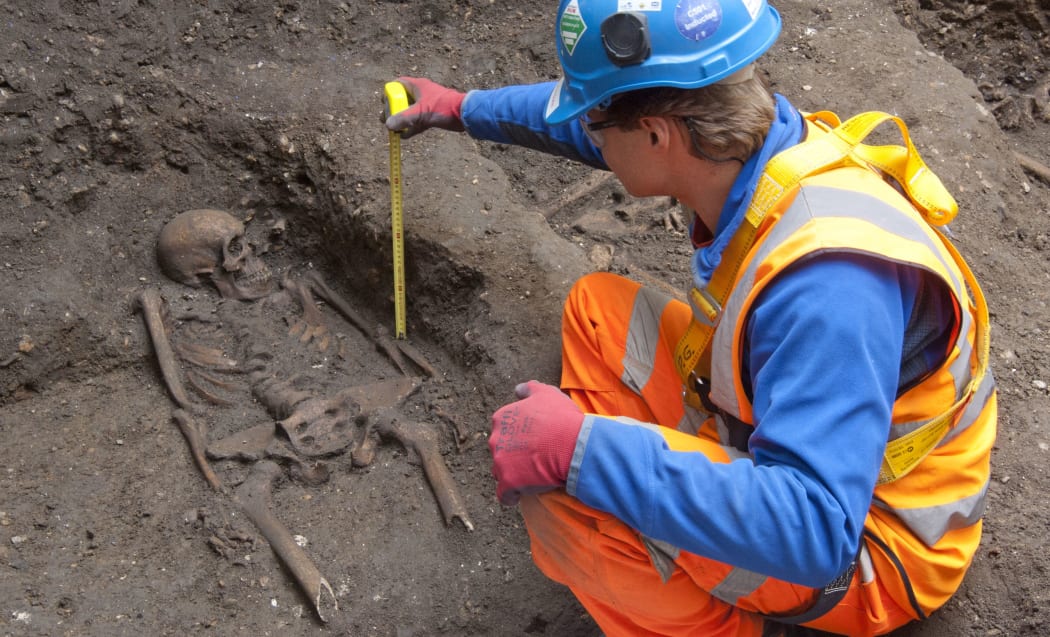Skeletons unearthed in London Crossrail excavations are Black Death victims from the great pandemic of the 14th Century, forensic tests indicate.
Their teeth contain DNA from the plague bacterium Yersinia pestis and their graves have been dated to 1348-50.
Records say thousands of Londoners perished and their corpses were dumped in a mass grave outside the City, but its exact location was a mystery.

Photo: AFP
Archaeologists now believe it is under Charterhouse Square near the Barbican.
They plan to expand their search for victims across the square - guided by underground radar scans, which have picked up signs of many more graves.
Crossrail's lead archaeologist Jay Carver says the find "solves a 660-year-old mystery".
"This discovery is a hugely important step forward in documenting and understanding Europe's most devastating pandemic," he said.
"Further excavations will follow to see if - as we expect - we are coming across a much bigger mass burial trench."
Between 1347 and 1351 the "Great Pestilence" swept westward across Europe killing millions of people. It later became known as the Black Death.
Huge death rate
It arrived on Britain's shores in 1348 and is believed to have wiped out up to 60 per cent of the population at the time.
In London, two emergency burial grounds were dug outside the walls of the City. One has been found at East Smithfield, while the other is known to lie somewhere in Farringdon.
In March 2013, Crossrail engineers uncovered 25 skeletons in a 5.5m-wide shaft - alongside pottery dated to the mid-14th Century.
Samples from 12 of the corpses were taken for forensic analysis. In at least four cases, scientists found traces of the DNA of the Yersinia pestis, confirming they had contact with the plague prior to their death.
To pinpoint which historical plague outbreak the "Charterhouse 25" could have fallen victim to, the researchers used radio carbon dating.
They determined the burial ground was used in at least two distinct periods - the earliest within the Black Death in 1348-50, followed by a later outbreak in the 1430s.

